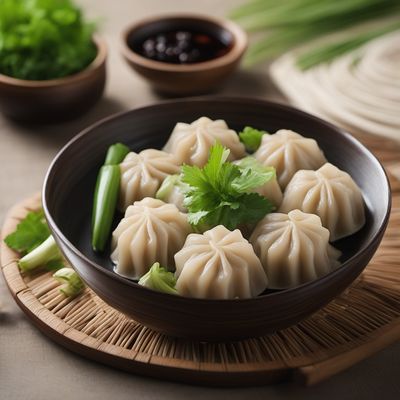
Ingredient
Blue lupin (without pods)
The Versatile Blue Lupin
Blue lupin, also known as lupini beans, are small legumes that have a creamy texture and a nutty flavor. They are commonly used in Mediterranean cuisine and can be enjoyed as a snack, in salads, or as a substitute for other beans in recipes. The beans are typically soaked and boiled to remove their bitter taste and make them more palatable.
Origins and history
Blue lupin has a long history and is believed to have originated in the Mediterranean region. It has been cultivated for centuries and was traditionally used as animal feed. In recent years, it has gained popularity as a nutritious and sustainable food source. Blue lupin is also culturally significant in some Mediterranean countries, where it is often served as a traditional snack or appetizer.
Nutritional information
Blue lupin is a good source of protein, fiber, and essential minerals such as iron and magnesium. It is also low in fat and calories, making it a healthy addition to a balanced diet.
Allergens
Blue lupin may cause allergic reactions in some individuals, particularly those with legume allergies. It is important to exercise caution and consult with a healthcare professional if you have any known allergies or sensitivities.
How to select
When selecting blue lupin, look for beans that are plump, firm, and free from mold or discoloration. Avoid beans that are shriveled or have a strong odor. If purchasing canned blue lupin, check the expiration date and ensure that the cans are not dented or damaged.
Storage recommendations
To store blue lupin, keep the dried beans in an airtight container in a cool, dry place. They can be stored for up to a year. If using canned blue lupin, store the unopened cans in a cool pantry or cupboard. Once opened, transfer any unused beans to a covered container and refrigerate for up to a week.
How to produce
Blue lupin can be grown in home gardens or small-scale farms. It requires well-drained soil and full sun exposure. Sow the seeds directly in the ground or in containers, and provide regular watering and fertilization. Harvest the beans when they are fully mature and dry.
Preparation tips
Blue lupin can be soaked and boiled to remove their bitterness before using them in recipes. They can be enjoyed as a snack, added to salads, or used as a substitute for other beans in various dishes. Blue lupin can also be ground into flour and used in baking or as a gluten-free alternative.
Culinary uses
Blue lupin is commonly used in Mediterranean cuisine, where it is often served as a snack, marinated in brine, or added to salads. It can also be used in soups, stews, and as a filling for savory pastries. Blue lupin flour is used in gluten-free baking and as a thickening agent in sauces and gravies.
Availability
Blue lupin is commonly available in Mediterranean countries such as Italy, Spain, and Greece. It can also be found in specialty stores or online retailers that cater to international ingredients.
More ingredients from this category
Recipes using Blue lupin (without pods) » Browse all

Hawaiian Style Inchicapi
Tropical Delight: Hawaiian Style Inchicapi with a Twist

Steamed Taro Cake
Savory Delight: Steamed Taro Cake with a Twist

Polynesian-style Taro Fritters
Tropical Taro Delights: Polynesian-style Taro Fritters

Imoni Soup
Hearty Autumn Stew: Imoni Soup

Indonesian Chinese Style Steamed Taro Dumplings
Savory Taro Delights: Indonesian Chinese Style Steamed Dumplings

Tuvaluan-style Coconut Tortelli
Island Delight: Tuvaluan Coconut Tortelli

Aish Merahrah Pascuense Style
Tropical Delight: Aish Merahrah with a Pascuense Twist

Mariana Islands-style Grilled Pollock with Taro Fries
Tropical Twist: Grilled Pollock with Taro Fries, Mariana Islands Style

Bánh Khoai - Vietnamese Taro Cake
Savory Delight: Vietnamese Taro Cake - A Culinary Masterpiece

Crispy Taro Dumplings
Golden Delights: Crispy Taro Dumplings

Smoked Bologna Sausage with Taro Mash
Savory Smoked Bologna Sausage Delight with Creamy Taro Mash

Boiled Taro and Crab with Coconut Sauce
Tropical Delight: Creamy Coconut Boiled Taro and Crab


